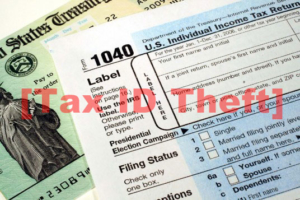Top Tips to Stop Tax-time Identity Theft – Part 1
 “Tax Time ID Theft – Part 1″ href=”https://sileo.com/top-tips-for-tax-time-security-peace-of-mind-part-1/”>Part 1 – Tax Preparers | Part 2 – Protecting Computers | Part 3 – IRS & Tax Scams
“Tax Time ID Theft – Part 1″ href=”https://sileo.com/top-tips-for-tax-time-security-peace-of-mind-part-1/”>Part 1 – Tax Preparers | Part 2 – Protecting Computers | Part 3 – IRS & Tax Scams
Tax season can be a stressful time of year for individuals and business owners alike, especially those who fail to plan in advance and then sacrifice focus and performance as they race to meet the filing deadline. But that stress is nothing compared to the potential destruction of your financial reputation brought on by tax-time identity theft. And tax-related identity theft is on a precipitous rise.
An audit published on July 19, 2012 by the U.S. Treasury Department, found that the IRS paid fraudulent tax returns to identity thieves worth a total of $5 Billion in 2011. The study also predicted that the IRS (and therefore, you as a taxpayer) will lose an estimated $21 Billion in fraudulent claims over the next five years. Tax-related information is the Holy Grail of identity theft because it contains virtually every piece of information, including a Social Security number (SSN), which a fraudster needs to defraud you.
Tax-related identity theft affects individuals in a couple of ways:
- Refund fraud. In refund fraud, an identity thief illegally uses a taxpayer’s name and SSN to file for a tax refund, which the IRS discovers after the legitimate taxpayer files. The legitimate taxpayer is then forced to spend time and money proving her innocence, setting the record straight with the IRS and protesting fines and penalties assessed because a refund was given where taxes were potentially owed. According to an article in the Wall Street Journal, “The National Taxpayer Advocate, an IRS watchdog group, got 55,000 requests for help with tax-identity theft in 2012. The group has seen a 650% rise in the number of identity theft cases it handles since 2008. And the IRS since last year has doubled to 3,000 the number of staffers working on such cases.”
- Employment fraud. In employment fraud, an ID thief uses a taxpayer’s name and SSN to obtain a job. When you as the employer report income for the employee to the IRS, the legitimate owner of the SSN appears to have unreported income on his or her return, leading to enforcement action.
There are steps that you can take that will minimize your chances of being affected by this growing crime. It is your responsibility to protect not only your own tax-related information, but also the sensitive data you handle on behalf of your business, employees and customers if you work in a job that requires you to handle such data.
This is the first of a three-part series in which we’ll provide you with practical checklists to help prevent tax identity theft and/or deal with it once it’s happened.
Today’s Tax-Time Identity Theft Tip: Choose a security-minded tax preparer.
Your greatest risk of identity theft during tax season comes from a surprising source: a dishonest or disorganized tax preparer. Ask yourself (and your preparer) these questions:
- Does your tax advisor have an established track record and years of satisfied clients? Google them to find out.
- When you visit your tax preparer’s office, are client files well protected? Do they leave tax-related folders in the open for the cleaning service to access, or are they locked in a filing cabinet or secure office? Do they meet with clients in a neutral, data-free, conference room?
- Have you interviewed them on how they protect your private data, whether or not they have a privacy policy and if they provide employee data security training?
- Have you expressed your desire that they take every precaution to protect your data? Asking professional tax preparers these questions sends them a message that you are watching!
- Is your tax preparer working on a secured computer, network and Internet connection?
- When filing W-2/W-3 and 1098/1099 tax forms, have you obtained them from a reputable source to make sure that they aren’t fraudulent?
Tax Time Identity Theft: Part 2 – Protecting Computers | Part 3 – IRS & Tax Scams
John Sileo is an author and highly engaging speaker on internet privacy, identity theft and technology security. He is CEO of The Sileo Group, which helps organizations to protect the privacy that drives their profitability. His recent engagements include presentations at The Pentagon, Visa, Homeland Security and Northrop Grumman as well as media appearances on 60 Minutes, Anderson Cooper and Fox Business. Contact him directly on 800.258.8076.


 Tax Time Identity Theft:
Tax Time Identity Theft: 